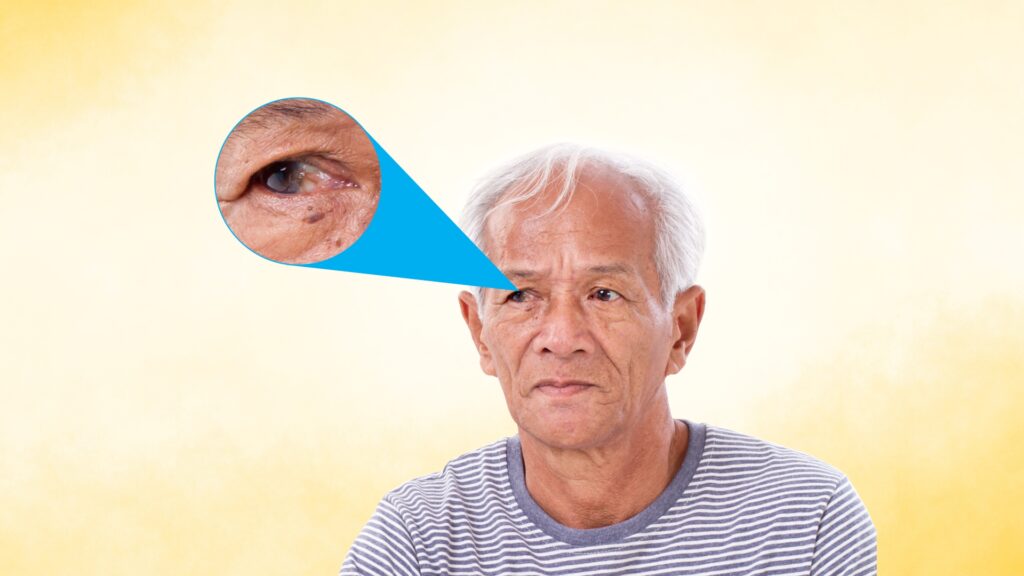
Pterygium is a condition of the human eye where the tissue of the conjunctiva grows onto the cornea in a roughly triangular shape. It appears pinkish and starts on the cornea near the nose. So, if it isn’t treated early, it may cover the entire cornea causing visual impairment.
It is present more among the male population. Also, people living near the equator are more prone to this condition. Hence, wearing sunglasses with a hat and using eye lubricants are recommended to prevent its growth.
Symptoms of pterygium
- Inflammation of the eyes
- Itchy eyes
- Persistent redness of the eye
- Tearing of the eyes
- Dry eyes
- Foreign body sensation
Layers of pterygium growth
Pterygium comprises many layers, which include:
- Head (apex of the pterygium, typically raised and highly vascular)
- Body (fleshy elevated portion congested with tortuous vessels)
- Hood (a fibrous non-vascular portion of the pterygium)
- Superior Edge (upper edge of the triangular or wing-shaped portion of the pterygium)
- Inferior Edge (lower edge of the triangular or wing-shaped portion of the pterygium).
- Fuchs’ Patches (minute grey blemishes that disperse near the pterygium head)
- Stocker’s Line (a brownish line composed of iron deposits)
Reasons for pterygium growth
The exact reasons for this condition are still unknown. But researchers have been able to associate certain factors with pterygium.
- UV-light exposure: People who spend excess time in sunlight are associated with this condition—especially people living near the equator and those among the male population.
- Genetics: As per studies, genetics may play a role in this eye condition.
- Age: Pterygium is observed in people as they advance in age.
- Windy and sandy environments: People exposed frequently to windy or dry conditions have pterygium growth.
Treatment for pterygium
The extent of pterygium growth determines the treatment method. This includes:
- UV protection: If the growth is small, wraparound sunglasses and hats are enough to prevent further growth.
- Lubricating drops: Using good lubricating eye drops will soothe the cornea or treat minor inflammations. But in the case of severe inflammation, the eye specialist may prescribe a short course of steroid eye drops. So, these eye drops will temporarily ease the symptoms.
- Surgery: It is the only method of removing pterygium. In this case, it happens after the eye specialist confirms the need for surgery and refers the patient to an eye surgeon. Following this, the surgeon will schedule the surgery before the pterygium spreads across the cornea. Otherwise, it may lead to scarring of the cornea and cause permanent damage to vision.
Cosmetic reasons may also require the surgical removal of pterygium.
Thereafter, You will have to undergo an eye examination every one or two years to check for new pterygium growth. Though certain conditions, such as intense UV radiation, can’t be avoided in cases of people living near the equator or in other conditions, a few precautions can keep the growth in check.
Maxivision is the leading eye hospital in Hyderabad. If you or your acquaintances are facing pterygium growth in your eyes, please feel free to consult with our expert specialists. You can be assured of the finest eyecare.